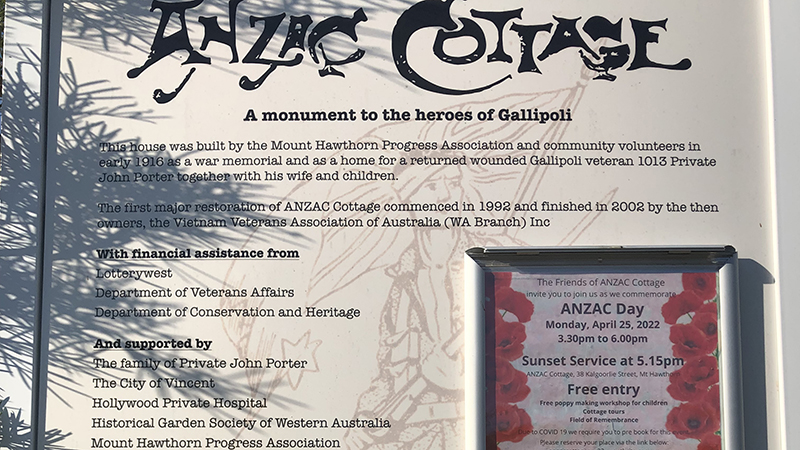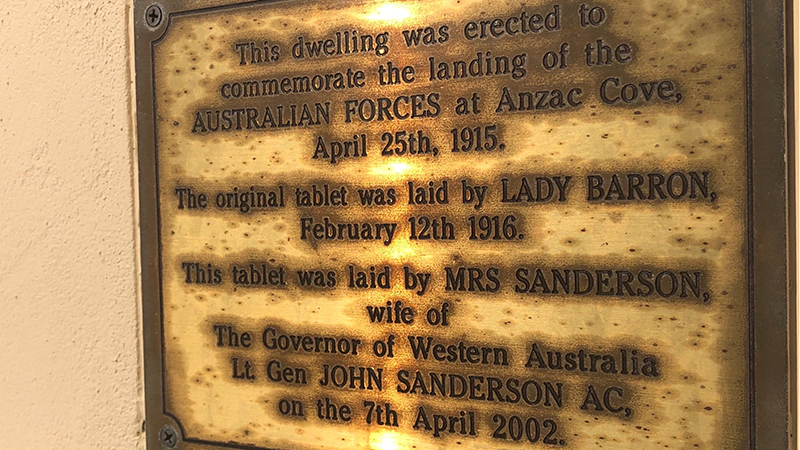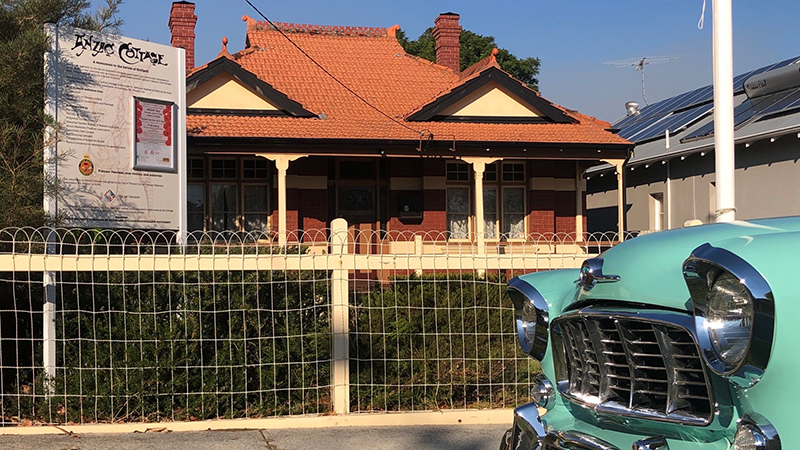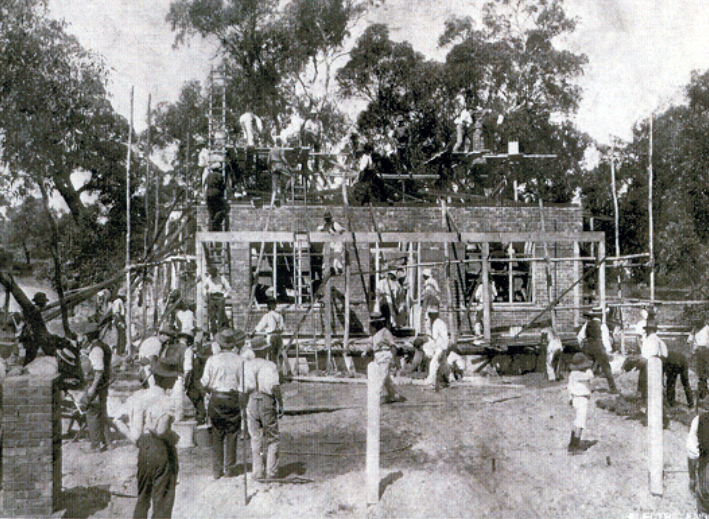The housing battle still rages for modern-day ANZACs
After Private John Porter was wounded in Gallipoli on 25 April 1915 he was gifted a house, while many others were provided with parcels of land, but the situation today is very different.
After Private John Porter was wounded on the first day of the Gallipoli landing on 25 April 1915, one of his next battles was finding a place to live for him and his young family.
Unbeknownst to Pte Porter when making his slow progress back to Australia, his hometown of Mount Hawthorn, six kilometres from the Perth CBD, was about to embark on a stirring display of community spirit that would change his life forever.
An outpouring of donations of time, skill, materials and money from the community culminated in a small army of 30 men armed with saws and axes on Saturday 29 January 1916 descending upon what at the time was scrub and bushland but is today an affluent inner-city suburb.
They cleared the site and the following Saturday saw 70 carts laden with the building materials, tools and even some furnishings wend its way from the centre of Perth out to the vacant block in Kalgoorlie Street.
In a single day, ANZAC Cottage was built to serve two purposes; as a place of commemoration for those who lost their lives at Gallipoli, and as a dwelling for a returned wounded soldier and his family.
Pte Porter and his family had a place to call home, which they did until the 1960s.
A different time
For returning soldiers of either world war life was tough, with no recourse to the types of rehabilitation and mental health support of modern society.
But when it came to housing veterans and society’s poorest, the early to mid-20th century offered better prospects than what faces today’s marginalised and war wounded.
During and after wartime, each Australian state government realised the importance of providing a source of income for returning soldiers as recognition of the personal and family sacrifices they made.
South Australia was the first state to enact a soldier settlement scheme in 1915, and other states quickly followed.
The New South Wales government introduced the Returned Soldiers Settlement Act in 1916.
Soldiers were eligible to apply for Crown Lands if they had served overseas with the Australian Imperial Forces or with the British Defence Service.
The land was available to the soldiers on affordable terms and they could also receive advances of money to make improvements to the land, which was often in poor condition.
They could also use the money for equipment, plants, stock and seeds.
By 1924, just over 24 million acres (97,000 sq km) had been acquired or allocated. Of this nearly 6.3 million acres (25,000 sq km) was purchased and 18 million acres (73,000 sq km) was crown land set aside. 23.2 million acres (93,900 sq km) had been allotted to 23,367 farms across Australia.
The programs continued after World War II, led by the states despite defence being a federal portfolio and often with a focus on resettlement in regional farming communities.
But the flourish of public housing that continued into the 1970s, when a pensioner (often a wartime survivor) could access a housing commission unit in a central suburb for around $9 a week, was in serious decline by the late 1980s.
Much of the housing stock was sold to private buyers and developers.
Waiting for help
Today, public housing waitlists are measured in years, not months. From Tasmania, with a wait time nearing five years, to Queensland and Western Australia with delays of more than two years.
More than 82,000 Victorians are on public housing waiting lists. In NSW, the Community Housing Industry Association NSW says the state’s social housing waiting list has more than 50,000 households waiting for up to 10 years or more for safe, secure and affordable housing.
The veterans of today will not be handed parcels of land.
Instead, they face a rent crisis, unaffordable housing and very limited government assistance.
The Department of Veterans’ Affairs (DVA) offers token assistance with a reduced interest rate on just a $25,000 portion of a home loan for those enlisted before 1985. With a Sydney median house price above $1.2 million, it amounts to a pittance.
Homeless veterans may be eligible for one-off crisis payments.
Where government has largely stepped aside, ex-service organisations (ESOs) often help current and former members of the Australian Defence Force.
The Returned and Services League (RSL) has been overseeing its charitable organisation, RSL LifeCare, since 1911 and today, through the Homes for Heroes program, cares for more than 7,500 residents in 28 retirement villages and 27 aged care homes across NSW and the ACT.
Other states have assistance offered through a range of charitable organisations, including other RSL bodies, Legacy, Carry on Victoria, and the Vietnam Veterans Association.
Like much of Australia’s veterans and housing support policies and support schemes, ANZAC Cottage is now a museum and testament to how Australia once strived to look after its wartime heroes.
Veterans seeking support should call 1800 VETERAN (1800 838 372).
A confidential counselling service is available by calling Open Arms – Veterans and Families Counselling on 1800 011 046.
State-by-state ESO support can be found on the DVA website.























